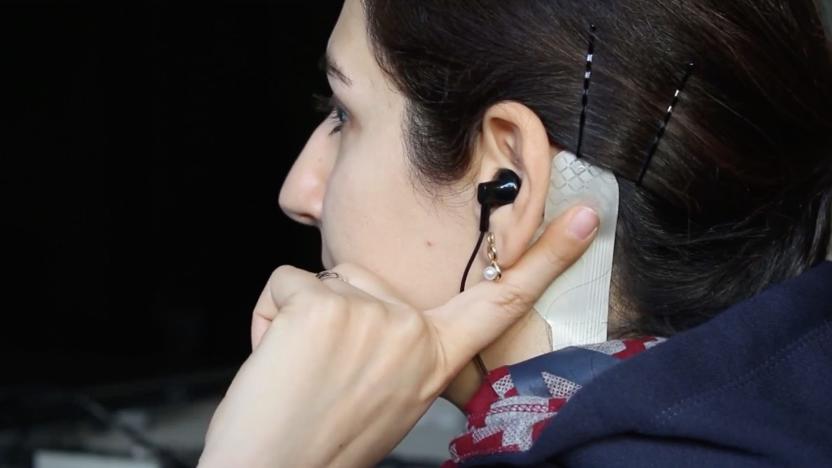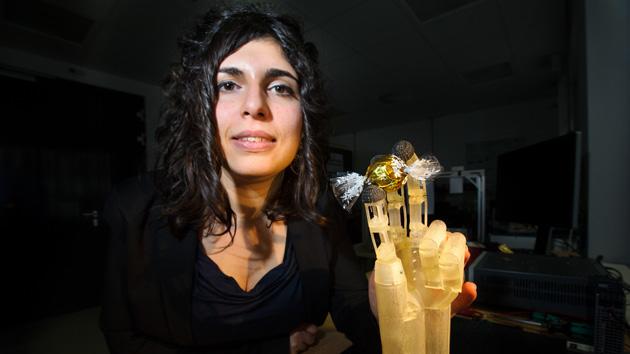SaarlandUniversity
Latest

Multitouch 'skin' makes your body the controller
Having a sophisticated computer interface on your body might seem like the stuff of science fiction, but a group of scientists at Germany's Saarland University have announced exactly that. Called Multi-Touch Skin, the material can be inkjet printed onto a plastic sticker and register a touch from multiple points at once, much like your phone or tablet does.

Super-precise artificial hand uses smart wires as muscles
As a rule, bionic hands are clunky contraptions made of motors, pneumatics and other machinery that just can't be as elegant as the real thing. Germany's Saarland University might just change that, however. Its researchers have developed an artificial hand that uses smart nitinol (nickel titanium) wires as its muscles. All you do to make them flex is heat them up or cool them down -- the metal 'remembers' its original shape before you bend it, so you don't need bulky equipment to move it back and forth. The wire bundles are as thin as cotton, but they're very strong and can move with much more precision and speed than usual. They don't even need sensors, since electrical resistance in the wires themselves is enough.

Intel funnels $40 million into global network of research laboratories
Like any tech company worth its weight in silicon, Intel puts plenty of cash into research, often partnering with outside labs and schools that are less concerned with turning every project into a multi-billion dollar product. After throwing $30 million at Carnegie Mellon last year to open two new labs, Chipzilla is investing $40 million more in a global network of university research centers. Over the next five years that money will be rolled out to what the company is calling, Intel Collaborative Research Institutes (ICRI). The ICRI are based on the same premise as Intel's Science and Technology Centers, like those opened at Mellon, except with a global reach. Two existing labs, the Intel Visual Computing Institute at Saarland University and the Intel-NTU Connected Context Computing Center at National Taiwan University are being rolled into the program. In addition, three new centers are being opened up, including ICRIs for Sustainable Connected Cities in the United Kingdom, Secure Computing at the Technische Universität Darmstadt and Computational Intelligence at the Technion-Israel Institute of Technology. For more info on what sort or work they'll be doing at the various labs check out the PR after the break.

Wireless bike brake system has the highest GPA ever
Color us a yellow shade of mendacious, but if we designed something that works 99.999999999997 percent of the time, we'd probably round off and give ourselves a big ol' 100 percent A+. We'd probably throw in a smiley faced sticker, too. Computer scientist Holger Hermanns, however, is a much more honest man, which is why he's willing to admit that his new wireless bike brake system is susceptible to outright failure on about three out of every trillion occasions. Hermanns' concept bike, pictured above, may look pretty standard at first glance, but take a closer look at the right handlebar. There, you'll find a rubber grip with a pressure sensor nestled inside. Whenever a rider squeezes this grip, that blue plastic box sitting next to it will send out a signal to a receiver, attached to the bike's fork. From there, the message will be sent on to an actuator that converts the signal into mechanical energy, and activates the brake. Best of all, this entire process happens will take just 250 milliseconds of your life. No wires, no brakes, no mind control. Hermanns and his colleagues at Saarland University are now working on improving their system's traction and are still looking for engineers to turn their concept into a commercial reality, but you can wheel past the break for more information, in the full PR.



